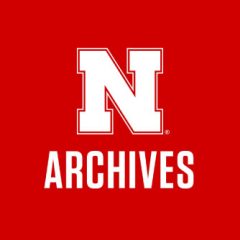The Beverly Deepe Keever Collection
Archives & Special Collections, University of Nebraska-Lincoln“NEWS ZERO 2
ORIGIN OF NEWS ZERO AND ITS SEQUELS”
Beverly Deepe Keever
My Department wanted me to get a doctorate. I agreed, although I continued to teach full-time for nine months annually. I moved at full-speed, as was Chuck in his legal work.
I entered the doctoral program at the Department of American Studies on campus and finished the course work.
Then DISSERTATION. I wrote a proposal that was approved to research how the New York Times reported on the U.S. nuclear weapons testing in the Pacific Islands a half a century earlier.
I singled out the Times because it was the only newspaper in the country to produce annually a five-inch-thick index of topics it had published and it was the first to employ two specialized reporters—for science and military affairs.
To begin, I wrote Freedom of Information Act letters requesting the F.B.I. files for key Times reporters and publishers; I was afraid the requests would take the longest time to be filled. They did. The reply came as I was finishing my writing; 10 heavily redacted photocopies of the F.B.I pages are included in Appendices 2,3,4, of my dissertation.
Second, I used the Times index to locate articles. Third, I used our library’s microfilm reader to photocopy articles on each test the Times had covered plus related work. Soon my home office was awash in photocopies. But to assess the Times coverage, I still had no sense of how many tests had actually been detonated.
Then, MIRACLE. Scouring materials in the basement of our research library, I found a celluloid microfiche titled: “United States Department of Energy, United States Nuclear Tests, July 1945 through September 1992 …,” dated December 1994.
This DOE list provides for the first time comprehensive, official statistics and other data that served as my yardstick for measuring the Times’ performance. Chuck set up a database of the data, using Excel spreadsheets, which I studied.
The results were staggering. The destructive force from detonations of 86 U.S. nuclear weapons tests at Bikini, Enewetak and Johnston Islands plus Pacific waters equated to 8,580 Hiroshima-size bombs from 1946 through 1962. Over the 16-year period, that’s 1.47 Hiroshimas per day.
These islands and waters were the “proving grounds” for testing plutonium-laced weapons too destructive and unpredictable to be conducted on the U.S. mainland, thus unleashing unimaginable infernos in the Pacific region that was once described as paradise.
Yet the Times covered only 56% of these tests as they were occurring.
Besides these infernos, the Pacific “proving grounds” anchored U.S. military superpower status today by serving as sites for the transition from conventional delivery systems to missiles.
I also analyzed 128 articles published by and indexed in the Times during the testing period on the topic of plutonium, a deadly, man-made element if ingested. Only one of the 128 Times articles mentioned plutonium’s 24,000-year half-life—meaning 500,000 years of radioactive existence—a newsworthy fact not subject to scientific debate nor government security.
(On August 9, 2021 the current Times science writer William J. Broad cited my research on his newspaper’s omission.)
The 500 radioactive millennia absent from Timespages deprived readers of a vital fact for grasping the stakes of the emerging nuclear age, for holding elected government officials accountable on a timely basis for decisions affecting themselves, their descendants and constituents for about 20,000 generations and for fathoming the negative impacts on the Pacific Islanders’ health and environments.
I used this finding to title my dissertation that I hoped would seize attention just as the world turned into a new century: “Millennia Lost, Islanders Unseen: The New York Times Framing of U.S, Pacific Weapons Testing in the Pacific, 1946-1962, and the Bittersweet Legacy.”
In all, I had examined 4,300 Times articles stored on microfilm or online, paid specialists to access the commercial Nexis and Medline databases, gleaned information from my FOIA requests and from a 161-page summary of the contents of 27 boxes of U.S. declassified documents released to the Republic of the Marshall Islands in response to that government’s FOIA request and searched for academic and U.S. or other official materials. My research materials were stored in boxes that filled 3/4rds of the wall of my laundry room, towering perilously over my washing machine and clothes dryer.
I submitted my dissertation in December 2000, just as the first year of the new millennium ended and attention to my work vanished. Dissertations usually require completion in seven years. With multiple extensions, mine had taken a decade.
Getting the dissertation published was almost as hard as getting it created. I shortened the title, distilled the contents and sent proposals to 38 book publishers. A few returned a negative form-letter. Most didn’t bother to answer.
MIRACLE 2: “NEWS ZERO” popped into my head serendipity-like for a new title. I wrote Common Courage Press, an obscure publisher I knew about because it had printed a shattering book from a feisty Native Hawaiian scholar, Dr. Haunani-Kay Trask.
Common Courage Press agreed to publish the book. I took a one-year sabbatical to transform my dissertation, with the expert help of Common Courage’s editor, Greg Bates.
TWO SEQUELS. The sabbatical also gave me time to interview Pacific Islanders who had suffered through the nuclear tests and an environmental scientist who has visited their ruinous sites. These magazine-style interviews were published in Honolulu Weekly and are added as sequels to News Zero. In 2004, News Zero was born and was posted on Amazon. It was ignored by general-interest media. In 2017, the paper copy of News Zero was digitized and also posted on Amazon’s Kindle. By 2021, the long-ignored Pacific Islanders are gaining reawakened interest because they are negotiating with the U.S. government for a new diplomatic and economic arrangement scheduled to end in 2023. These negotiations coincide with the rising regional power and economic influence of mainland China.
